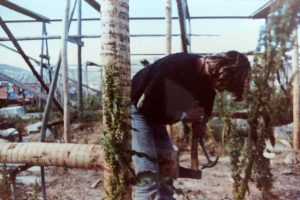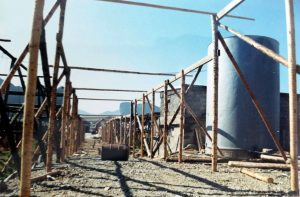We may receive a commission when you use our affiliate links. However, this does not impact our recommendations.
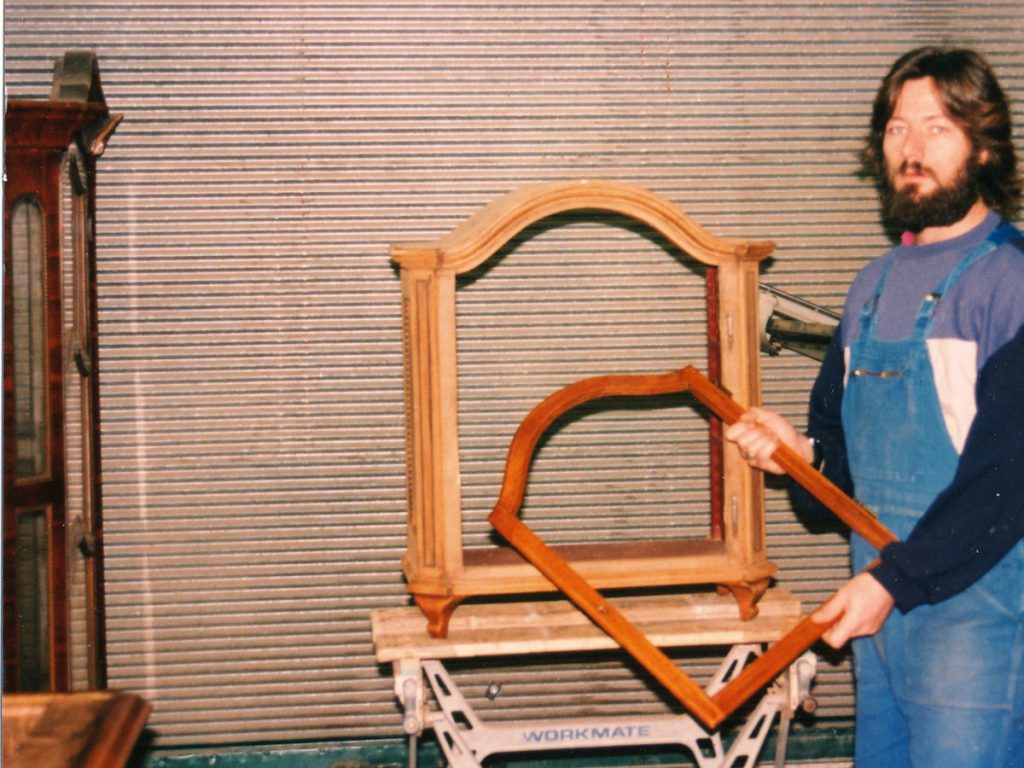
The young Gal in training.
I met Gal Tel Vardi about fifteen years ago when I spent a semester as a visiting lecturer at Shenkar College of Design. Gal (“Wave” in Hebrew) was the head of the advanced fabrication lab, overseeing (among other things) the laser cutters, the rapid prototyping, and the CNC machines that helped our students in executing their prototype ideas faster and more accurately.

Gal spent time in Norway, building a unique timber frame structure that is meant for drying fish.
- Gal, circa 1985, while building Drying flake structures for drying herring fish in Norway.
My mission as a lecturer for furniture design and woodworking was to teach our students how to master “old world” woodworking tools and techniques, from the safe use of the band saws to the proper handling of a chisel. Gal, on the other hand, was positioned at the other end of the technology spectrum, dealing with screens, computer programs, and algorithms. So when I visited his lab for the first time I anticipated meeting a modernist tech geek who does not know or care, about traditional woodworking, let alone the history of furniture design. But boy, I was wrong.
Over our first conversion, I learned that Gal was a graduate of a few prestigious furniture making certificate programs (in France and Switzerland) and that he was fortunate enough to apprentice under the mentorship of some acclaimed makers. His training included marquetry, veneer work, traditional joinery, and carcass design, plus relief carving and wood conservation technique. The person that I met was a true renaissance man who harbored a sea of knowledge that span from ancient woodworking to the most recent achievements of our field.
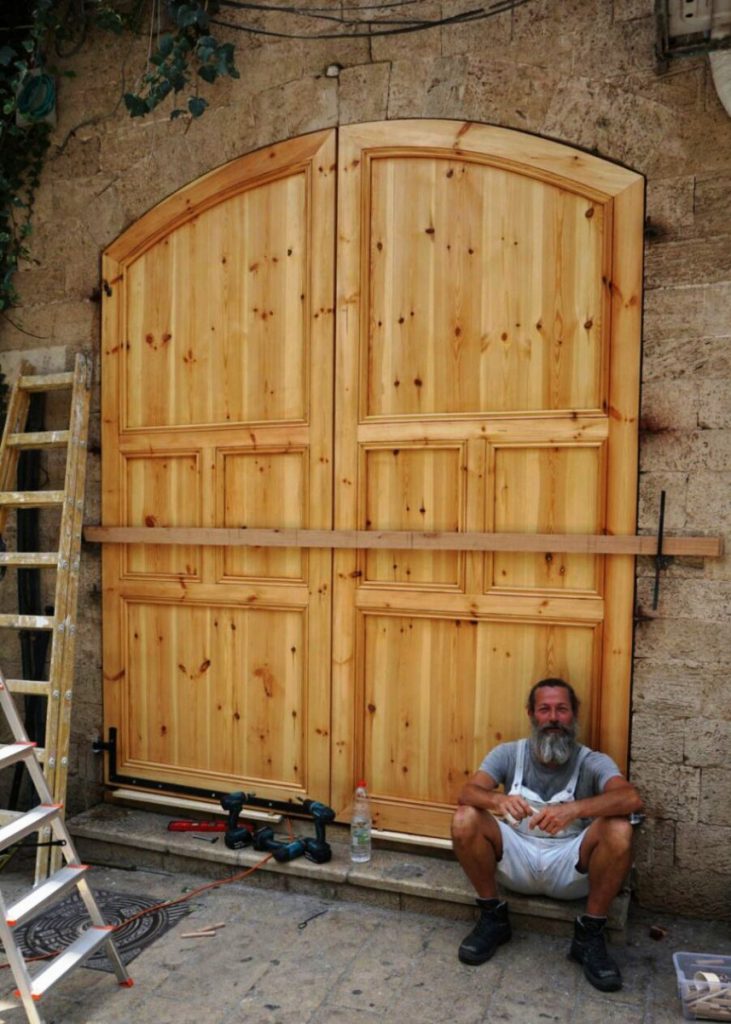
Gal sitting in front of a door reconstruction project in Tel Aviv. Gal is a great restorer of furniture and carpentry work.
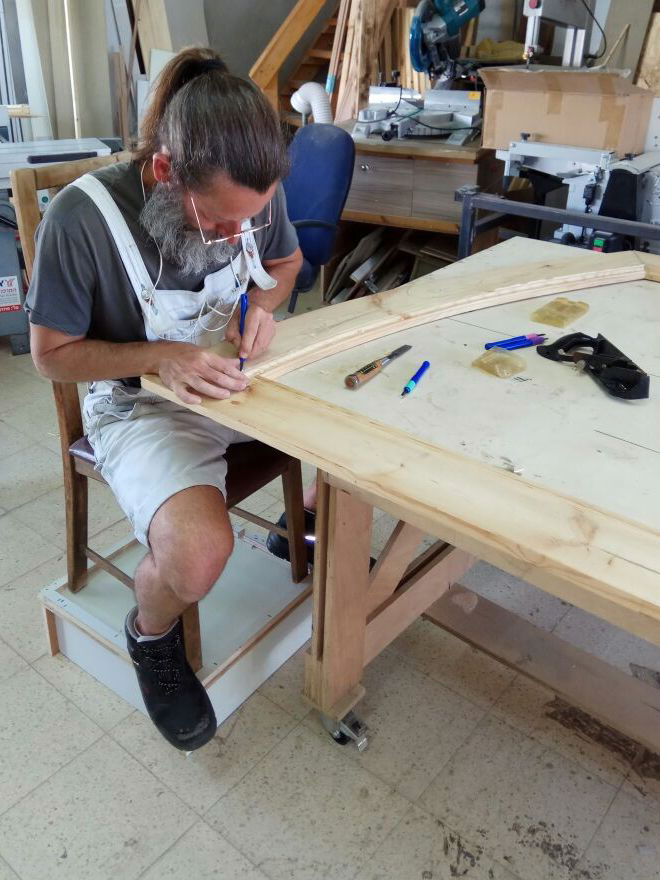
Sometimes Gal works on big scale reconstruction projects. This gate was originally built for a doorway in old Tel-Aviv. Gal rebuilt the falling apart gate while trying to adhere to the original design and details as tight as possible.
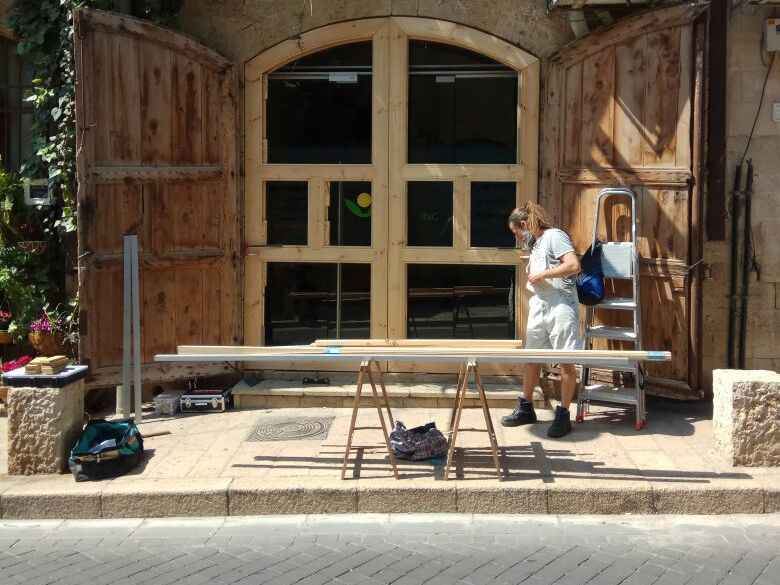
Gal is a disciple of the European woodworking tradition. His training included marquetry, veneer work, traditional joinery, and carcass design, plus relief carving and wood conservation technique.
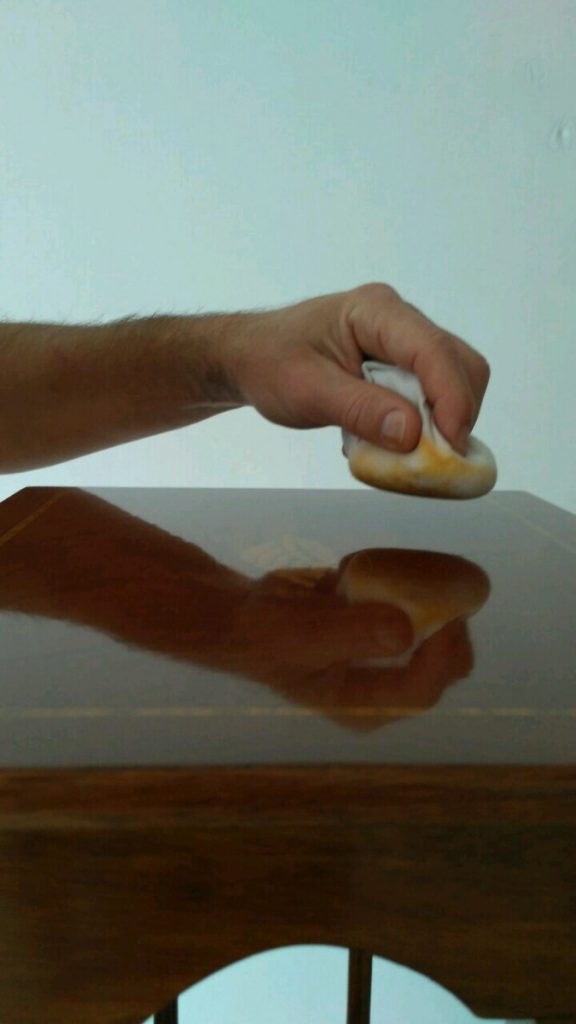
Gal is an expert in French polishing too.
After returning to Israel from Europe he dedicated his time to furniture restoration, teaching and lecturing on design and furniture history, and ultimately establishing the rapid prototyping lab at Shenkar.
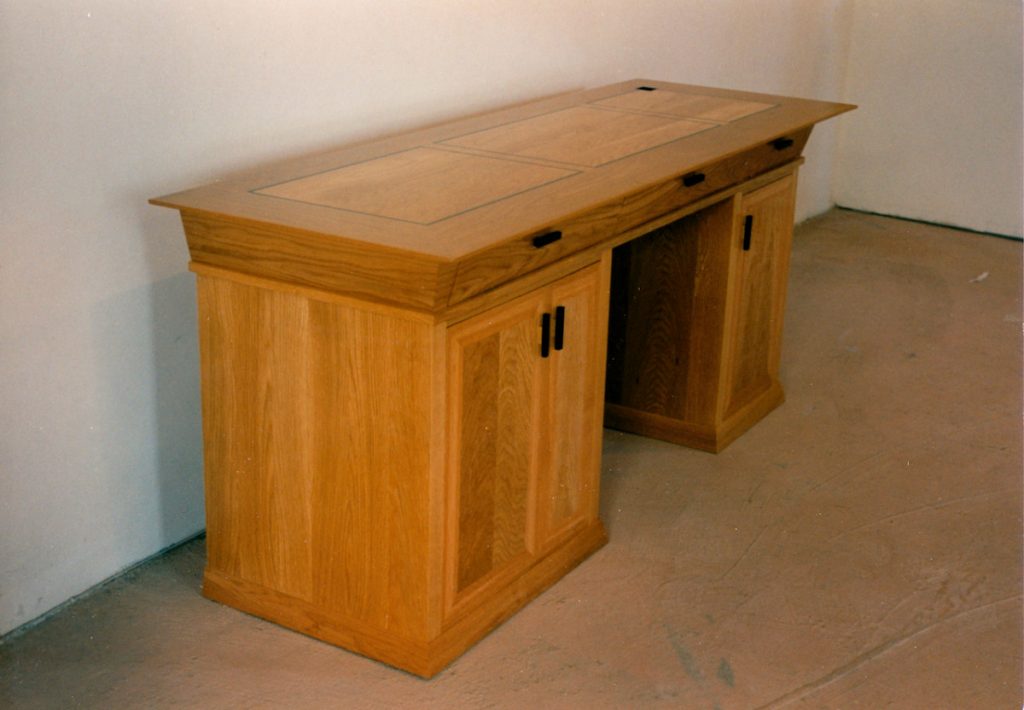
Gal built this Bureau years ago. It careers the whole marks of his unique style or original work.
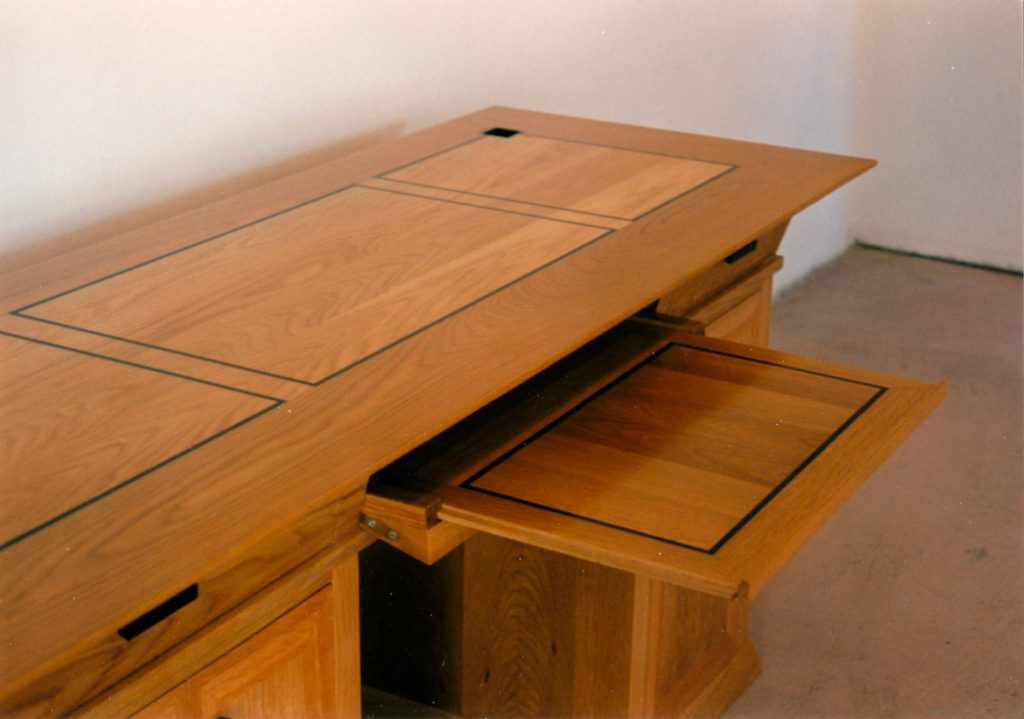
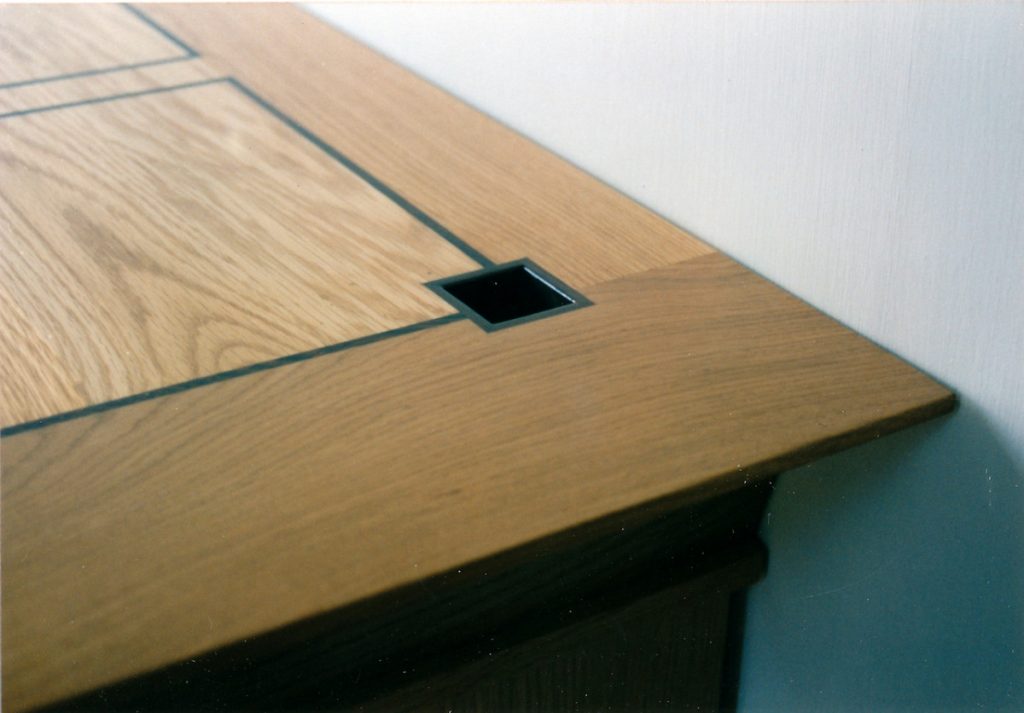
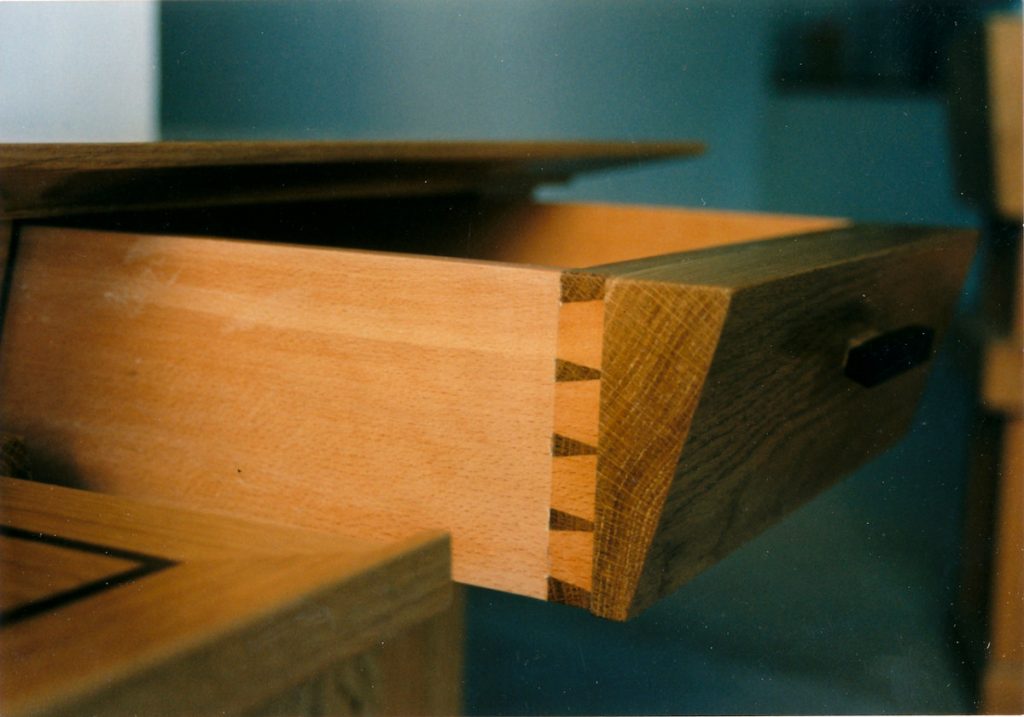
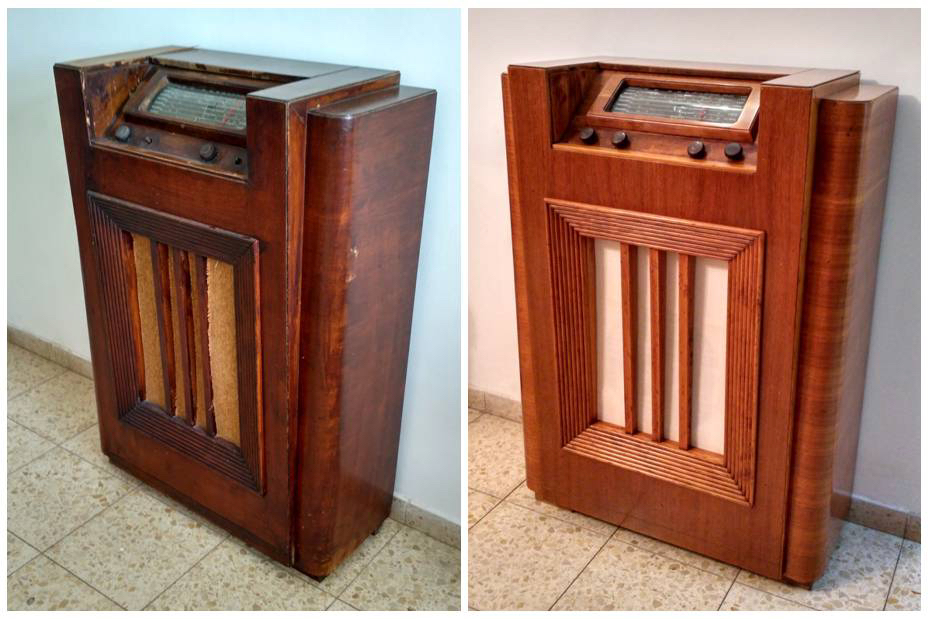
One of Gal’s restoration project was an old Art-Deco radio. The old wooden box radio was in bad shape. Two of the four bakelite knobs were missing and the speaker’s screen was deteriorating. Gal had to fabricate new knobs and recreate the screen.
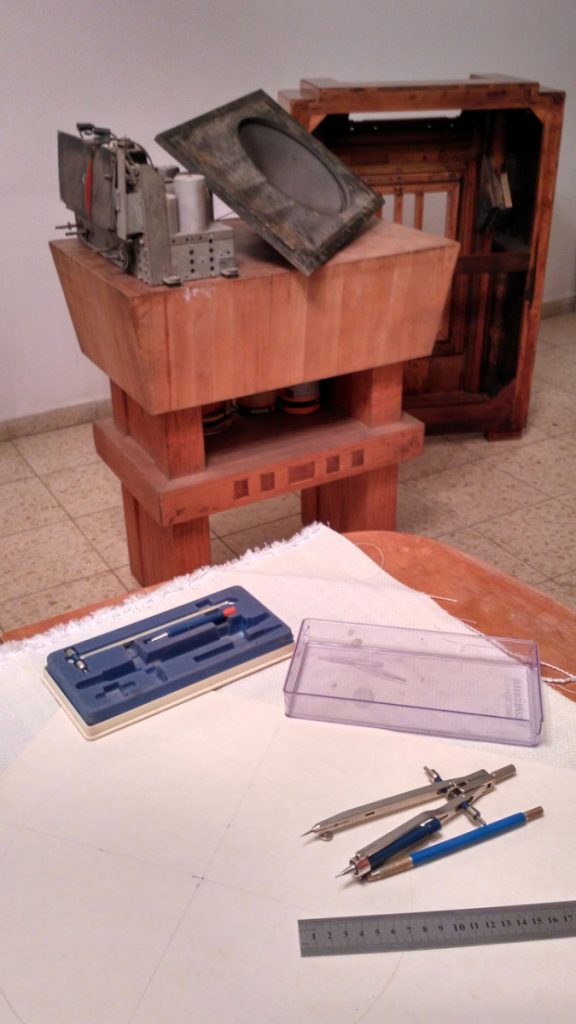
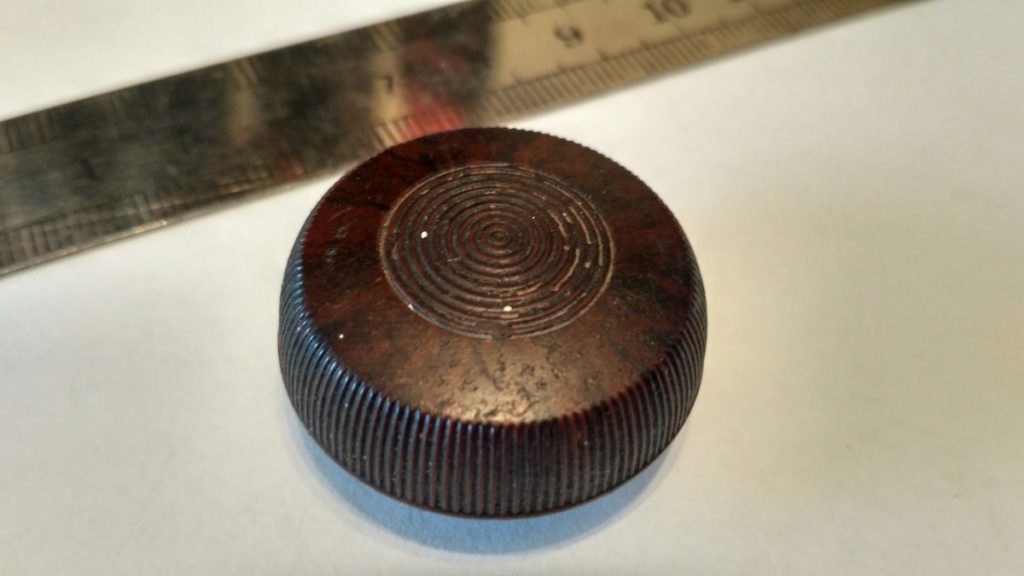
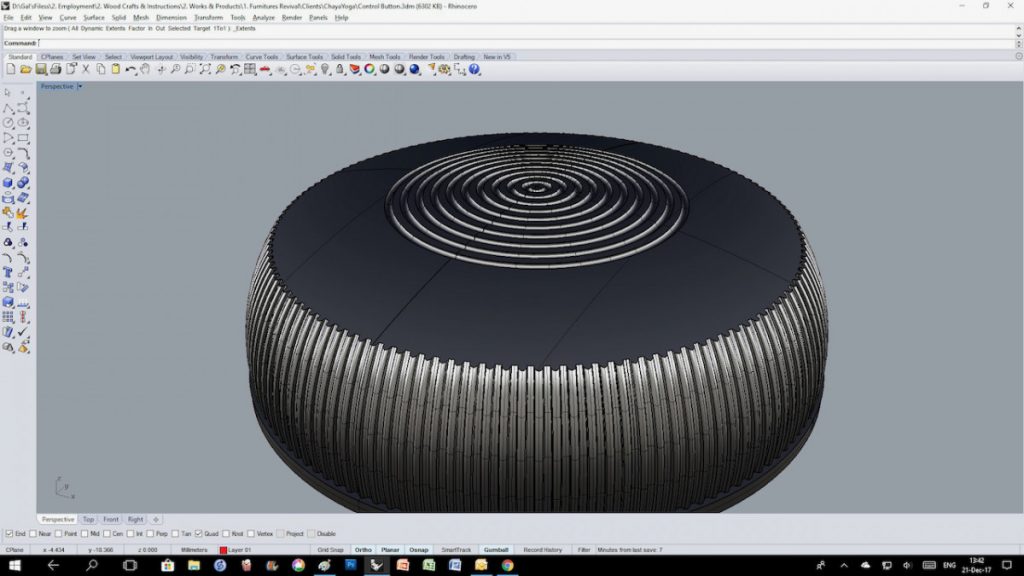
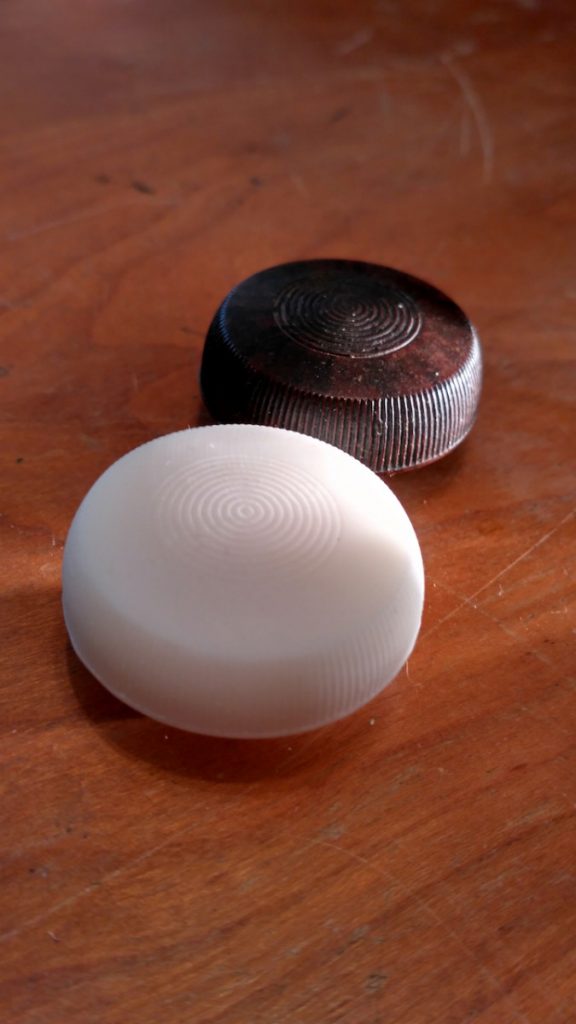
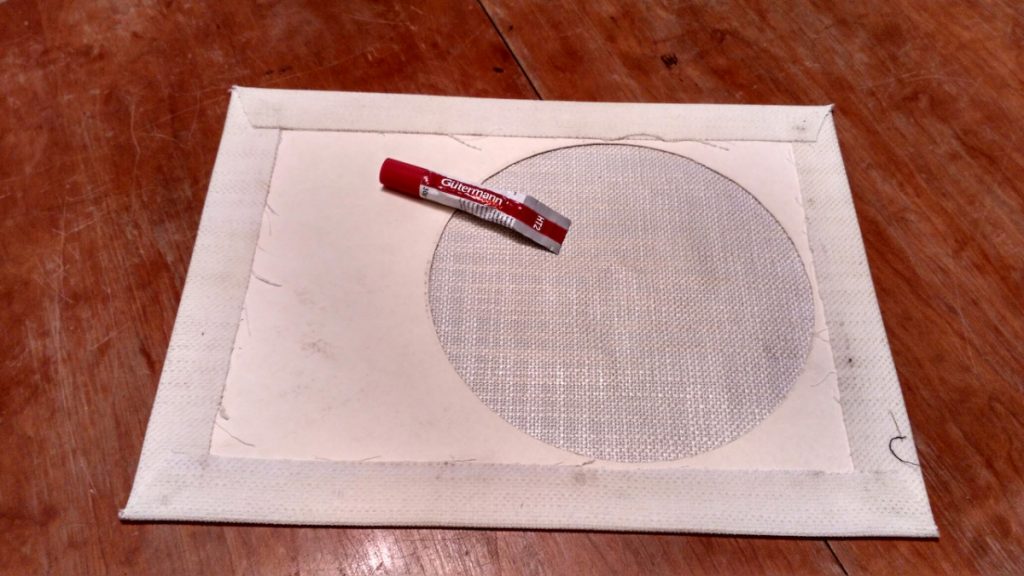
Like most Israelis, he lives in a small apartment. His apartment building is on the Tel Aviv Mediterranian frontier, just a few hundred yards from the waves. To be as close as possible to his work he decided that his apartment can also serve as his studio and surfing board depository (Gal is an avid surfer). Call it a design lab, a home studio, or an Urban Woodshop, Gal’s apartment is a place that allows him to generate his dreams and ideas and create small to medium size furniture and more.
Below, you can see and read about his Urban Woodshop, his projects, and the way he negotiates life and work in the same space. Gal’s special solution might not work for everyone but if you can’t justify renting a dedicated studio space you should definitely pick up some ideas from this talented Israeli artist.

This is Gal’s apartment building, just a few hundred yards from the Mediterranian sea.
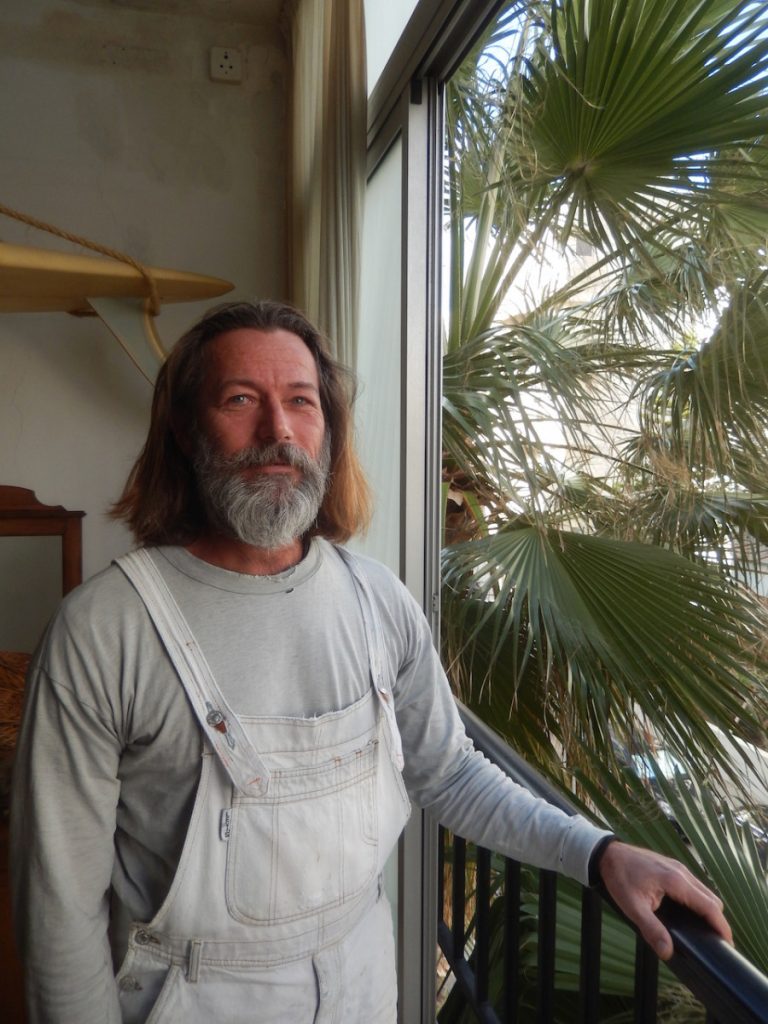
Gal in his living room/urban woodshop.
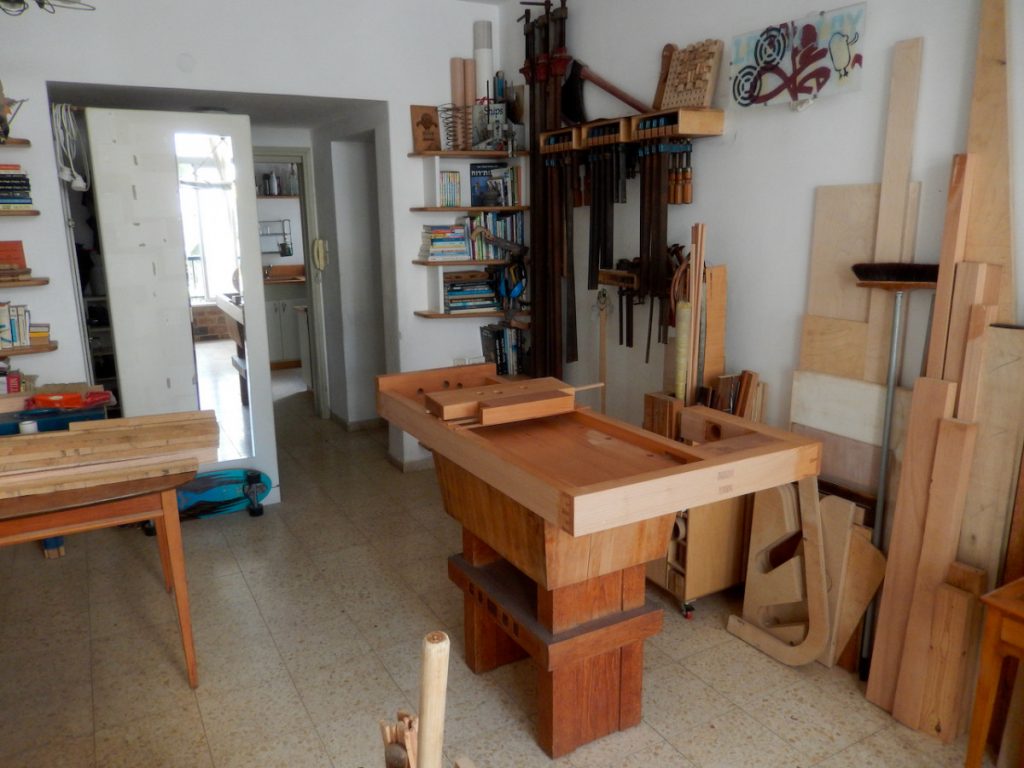
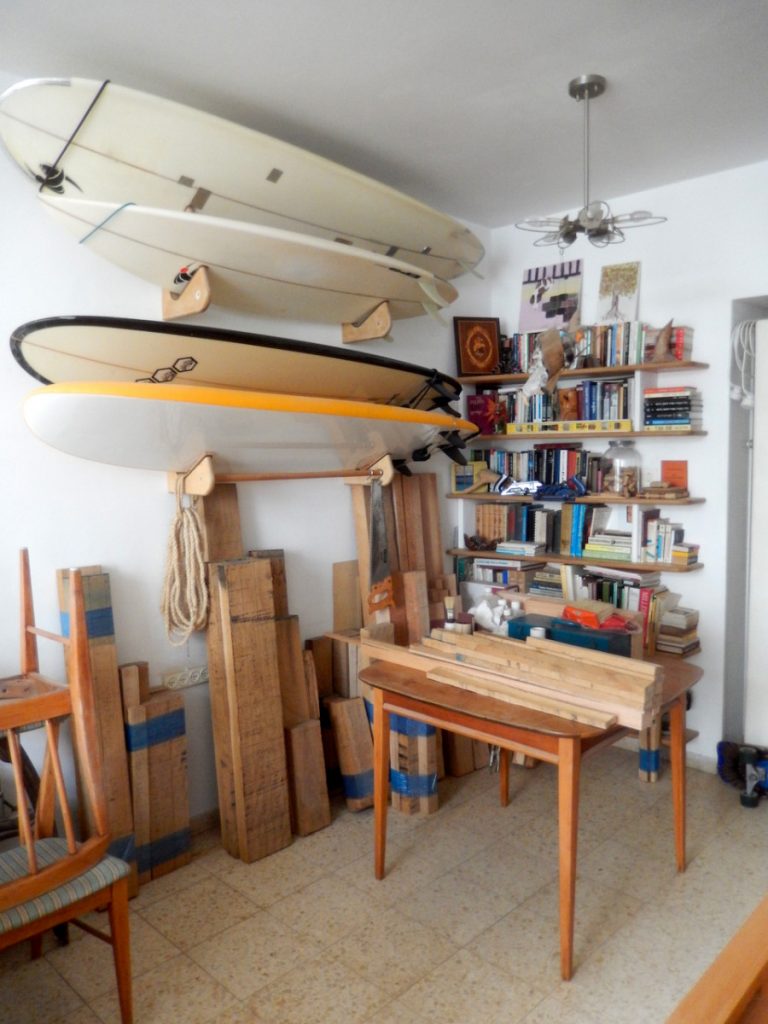
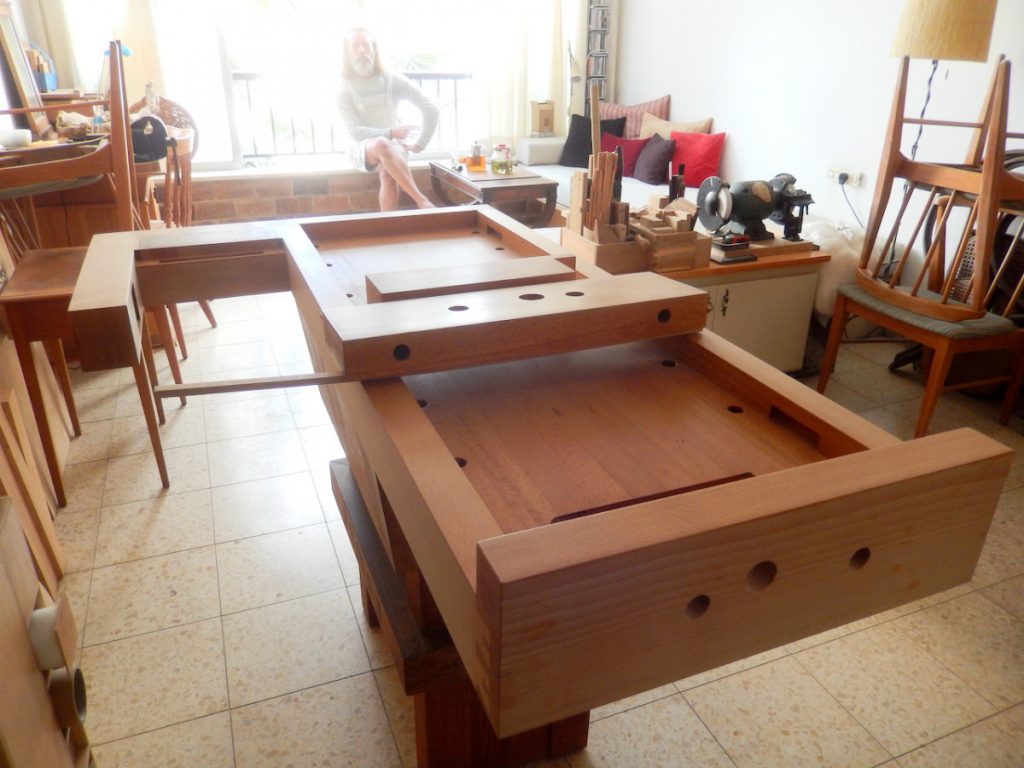
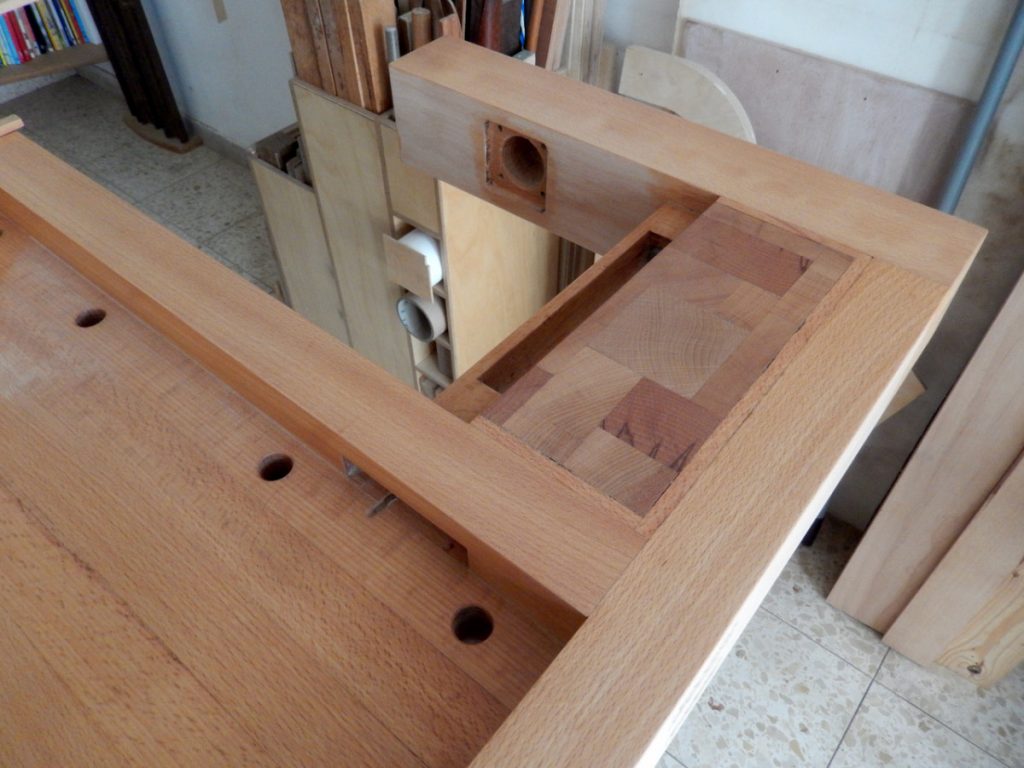
His current project is a small workbench in the Northern/Central European style. Once the bench is completed it will be the centerpiece in his living room.
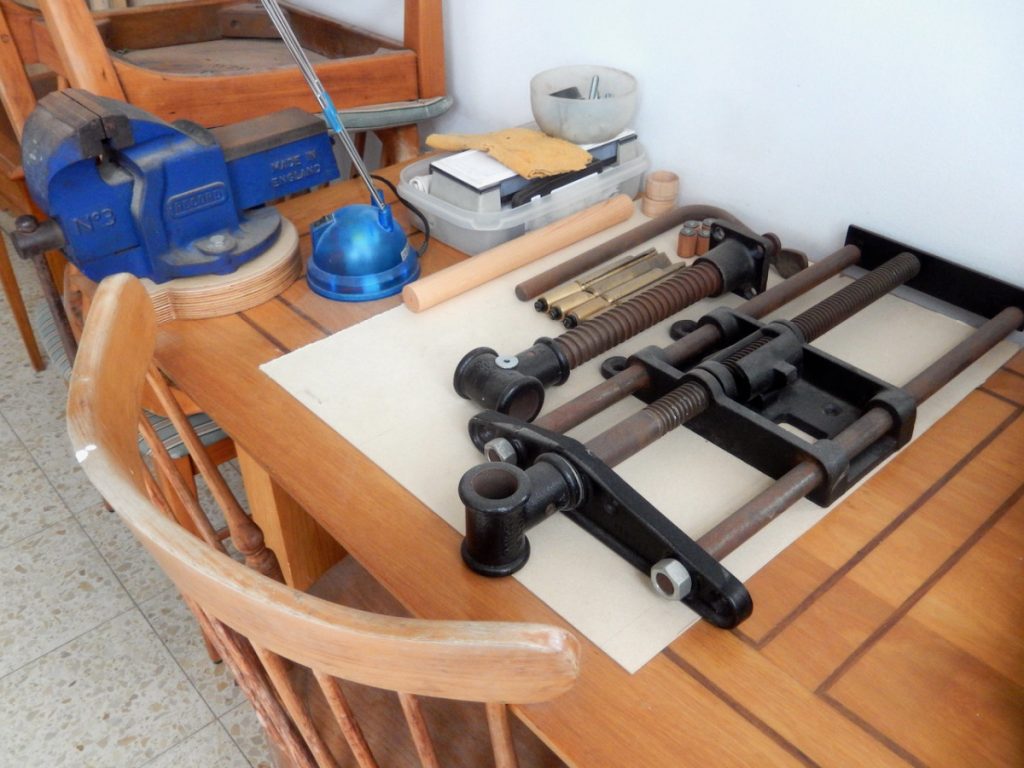
Parts for his new workbench.
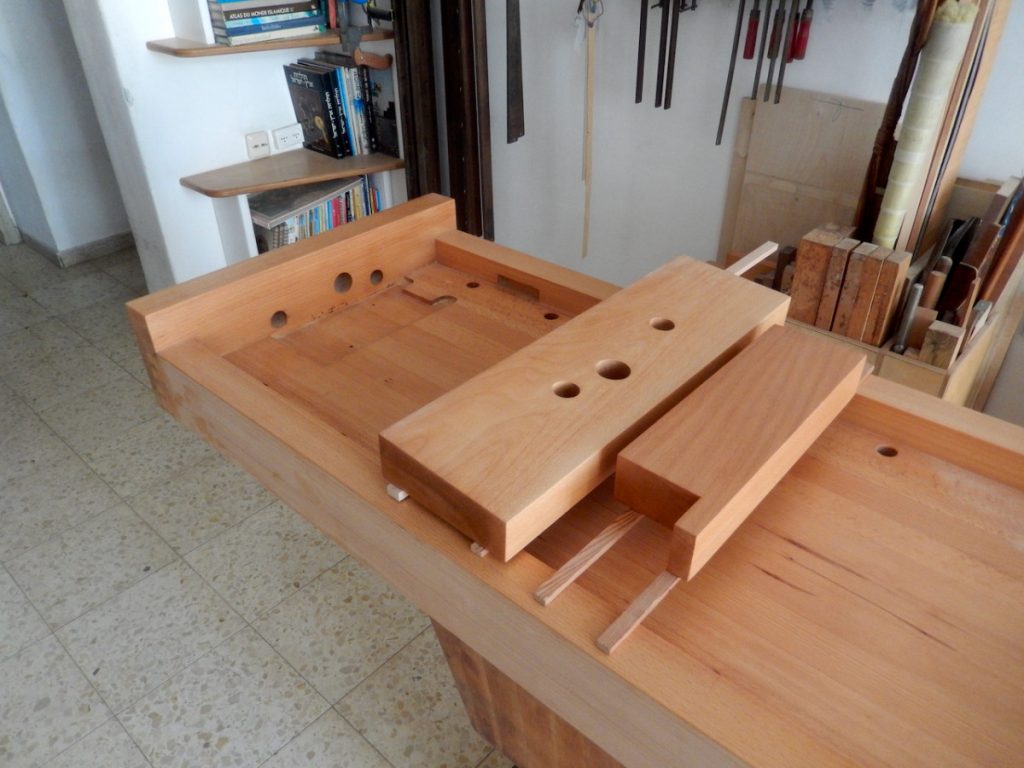
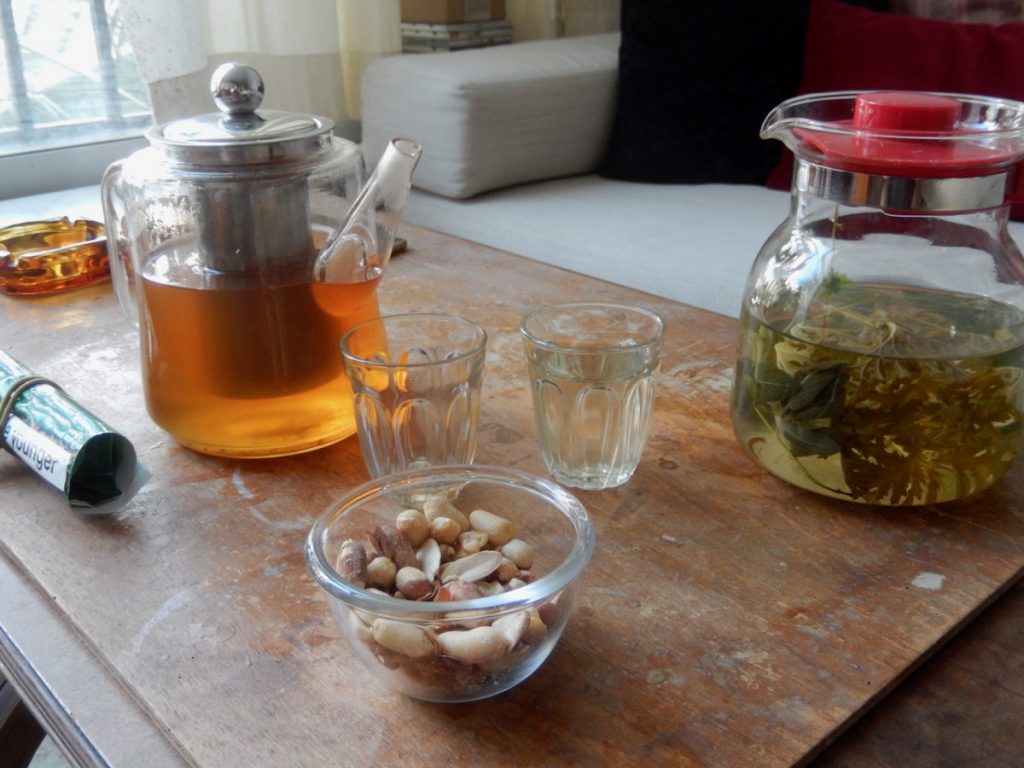
Gal handpicked forged the herbs in the Galilee and brewed an amazing tea for us.
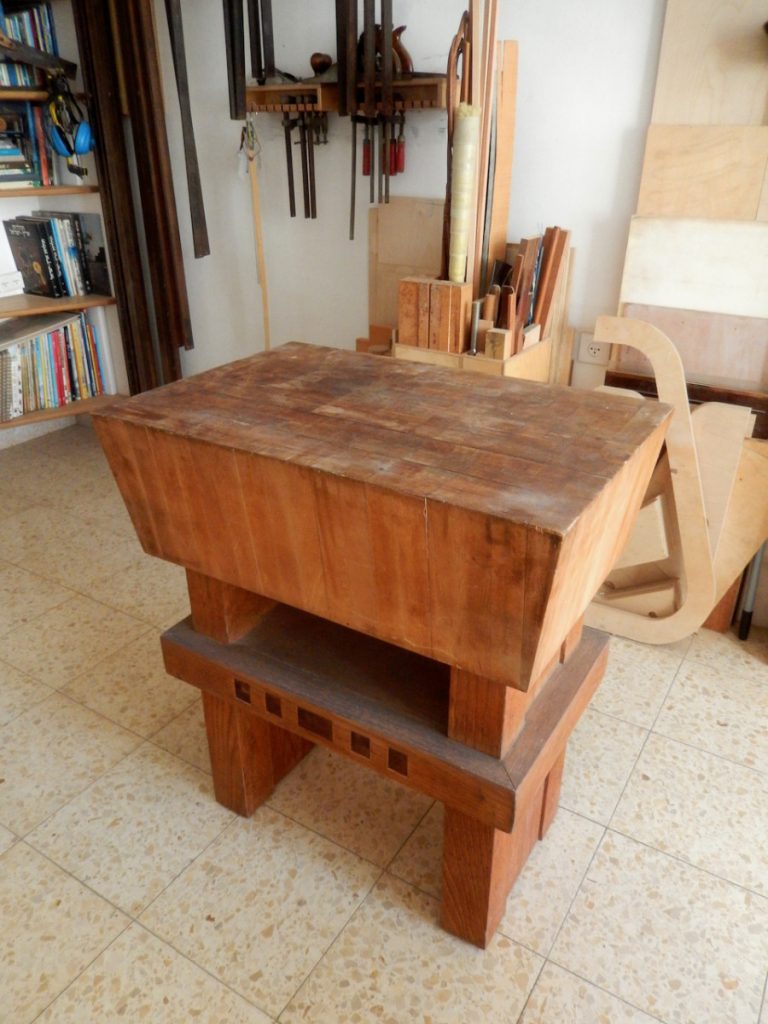
Until his new workbench is completed he is utilizing a butcher’s block table as a temporary sub. He built this piece many years ago.
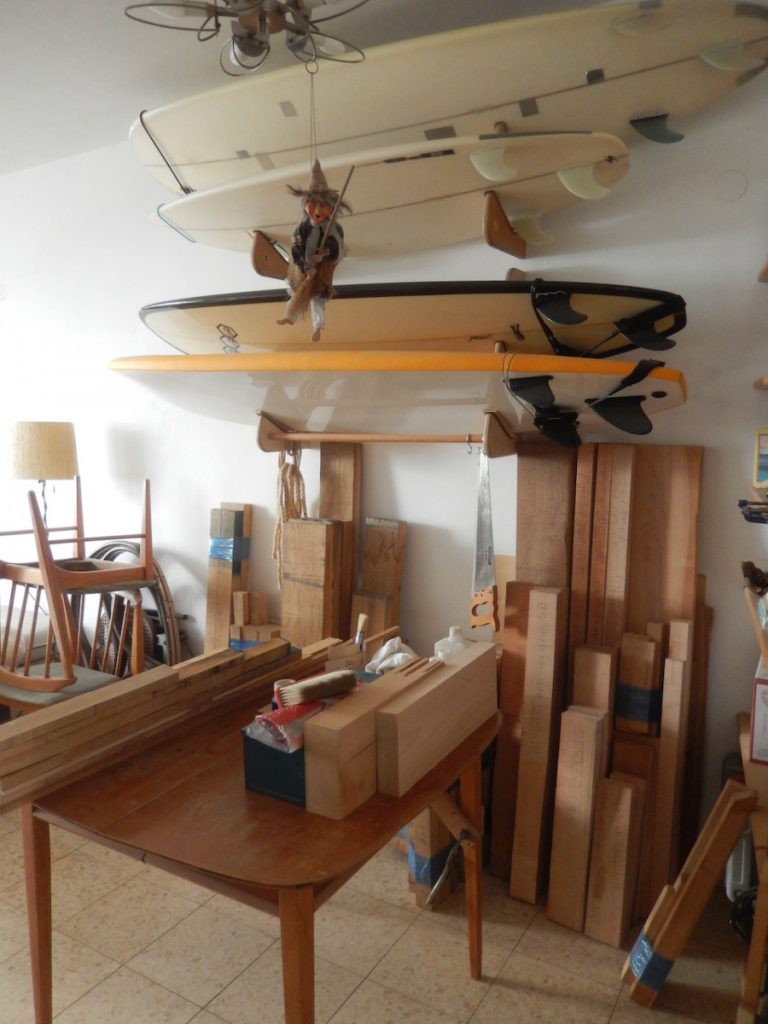
Surfing boards in the living room/home shop. Gal’s dining table is often used as an auxiliary table for stock and projects.
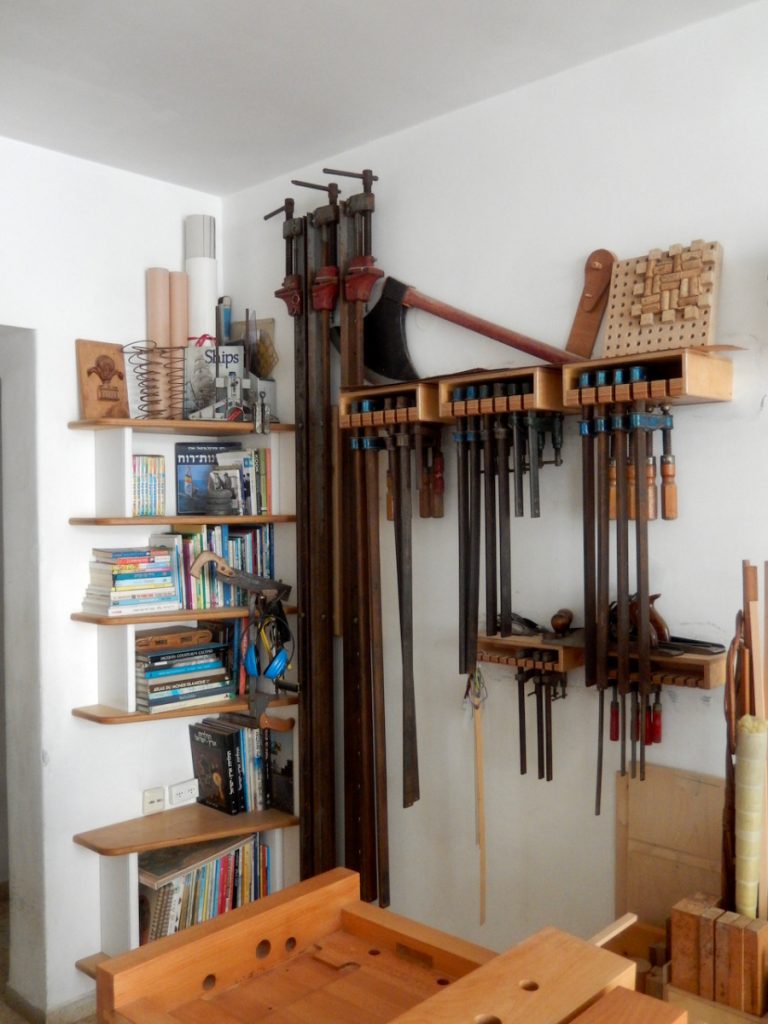
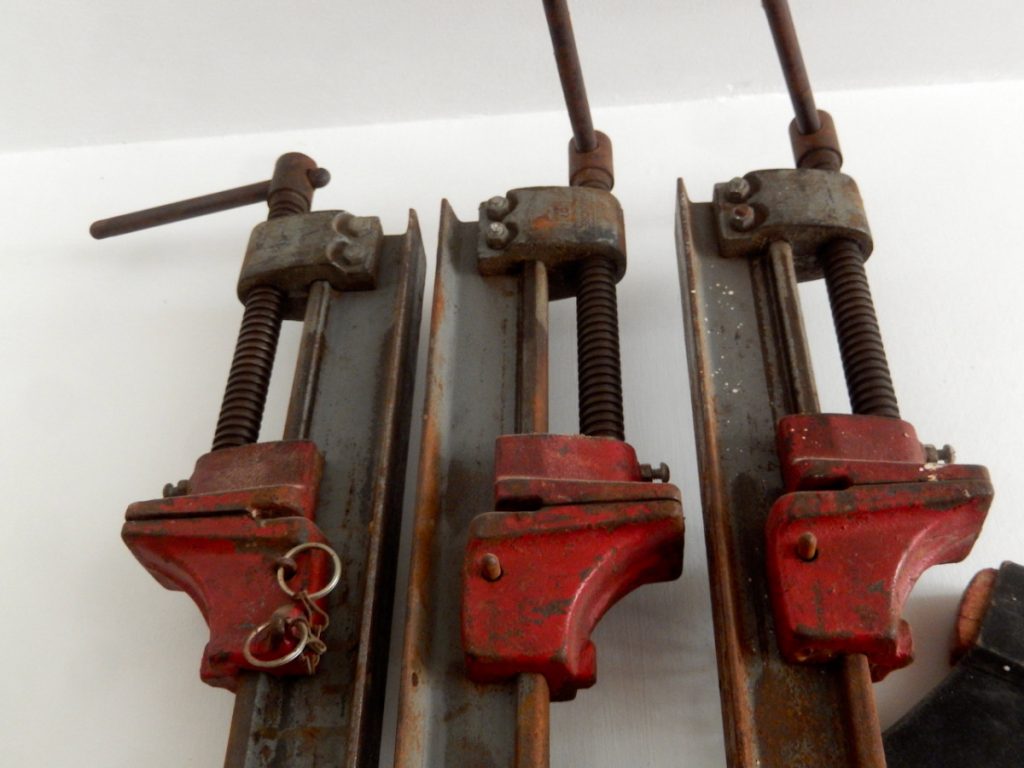
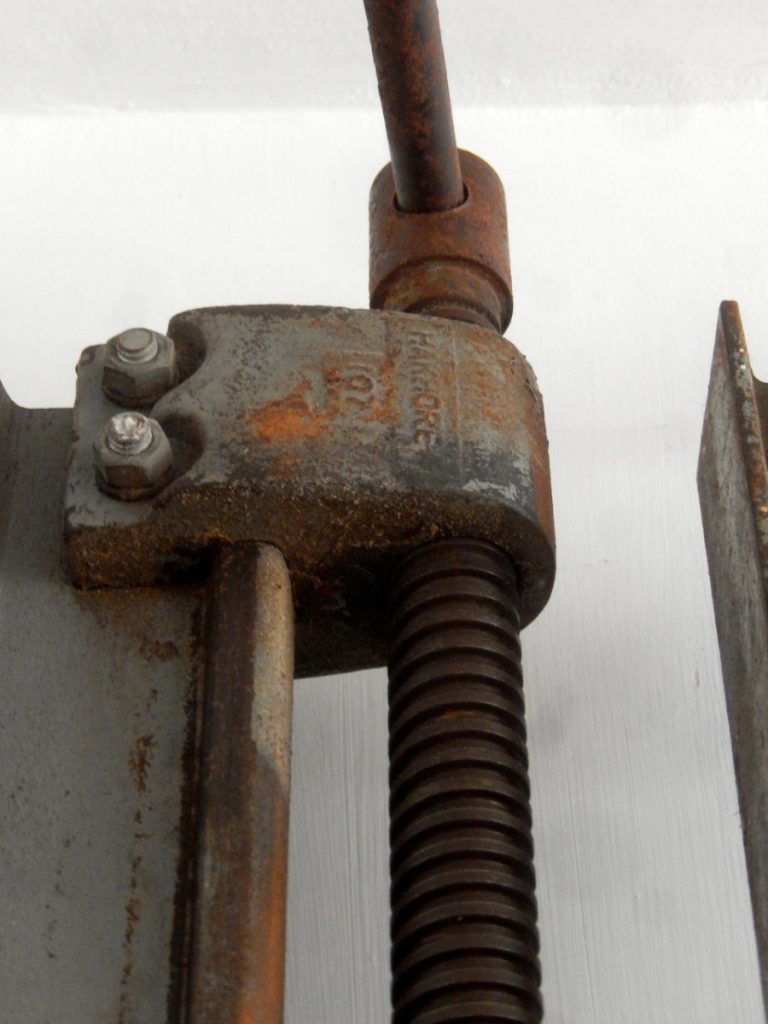
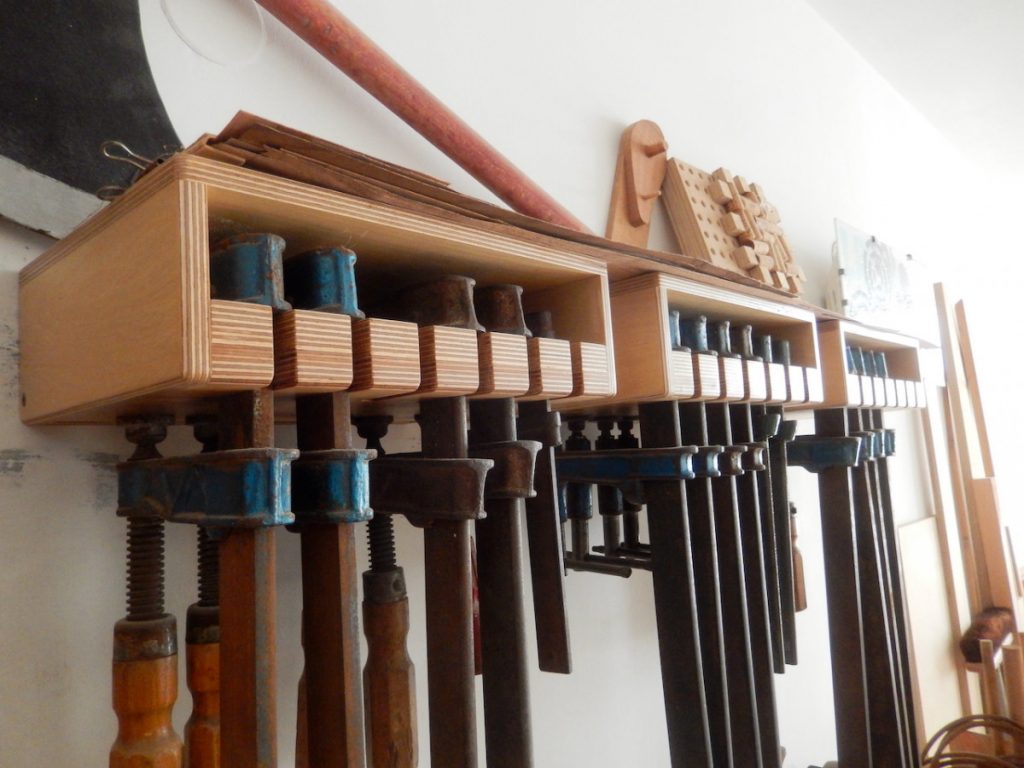
Bar and F-clamps on display in harmony with a bookcase. These massive bar clamps and the strong F-Clamps were made in Israeli by HaKHoret Clamp Company. Sadly, with the changing tides of commerce, consumption, and the blight of hyper globalism, this company ceased its clamp making operations.
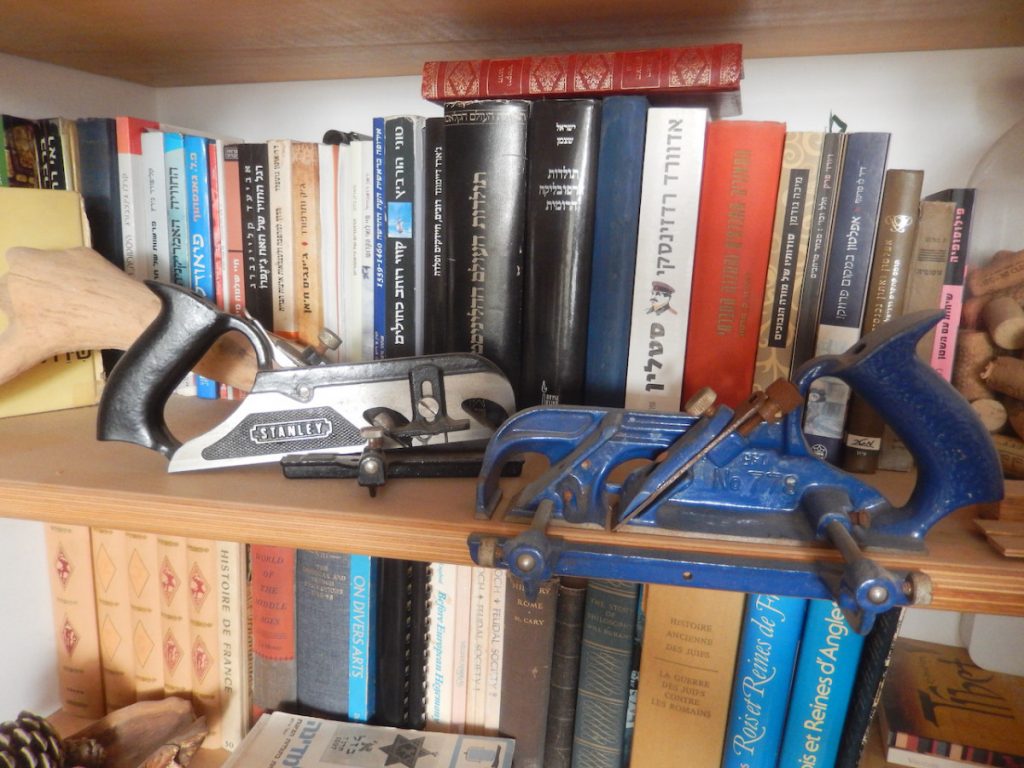
Books and Planes on the same shelf… why not actually?
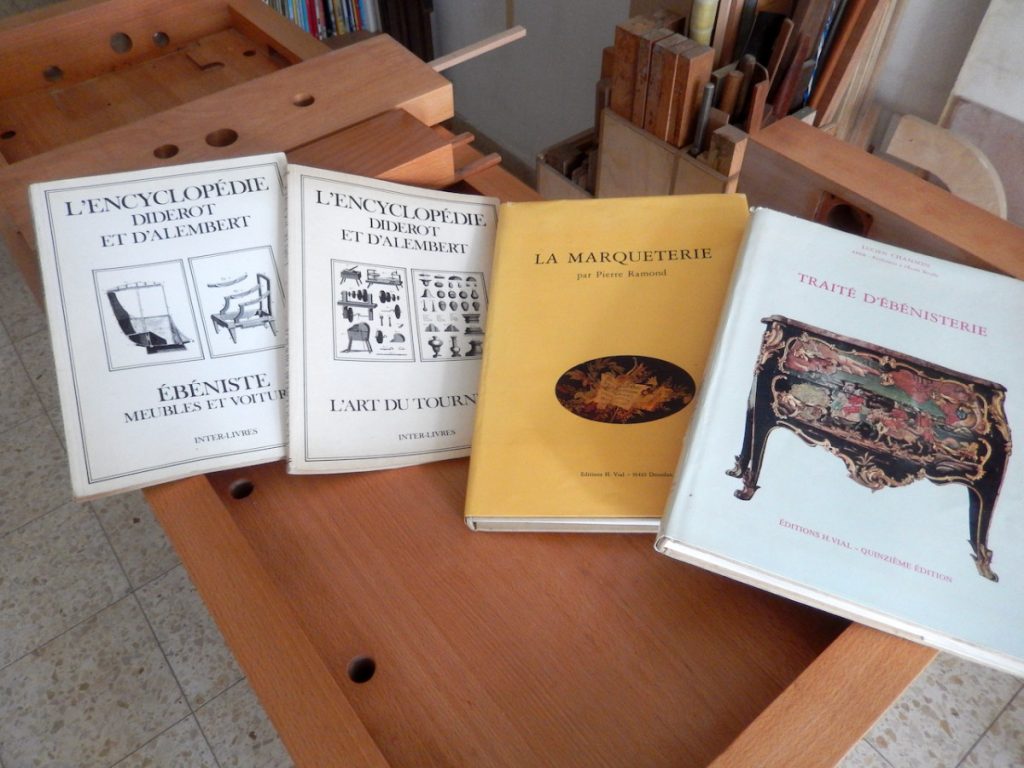
French woodworking books.
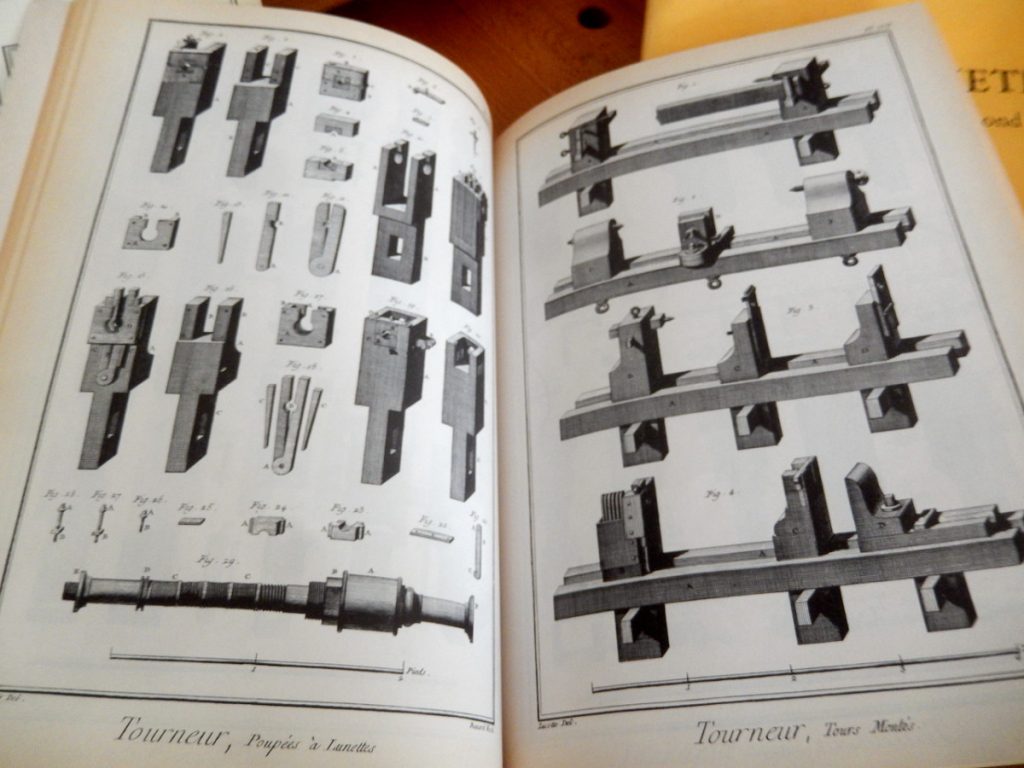
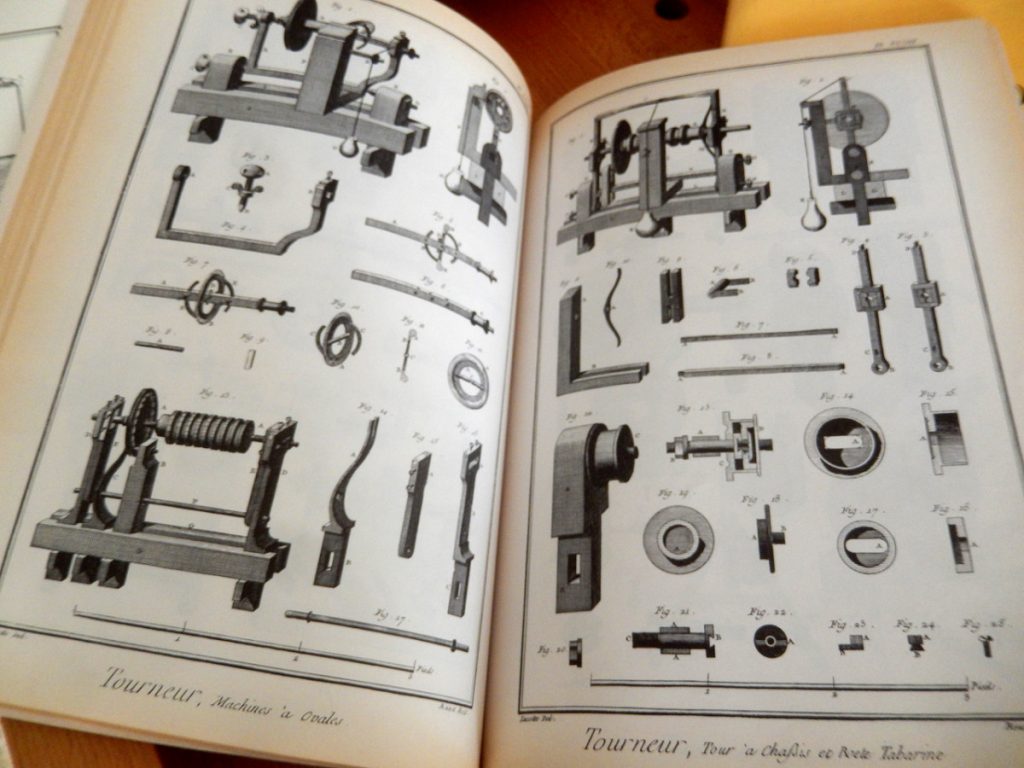
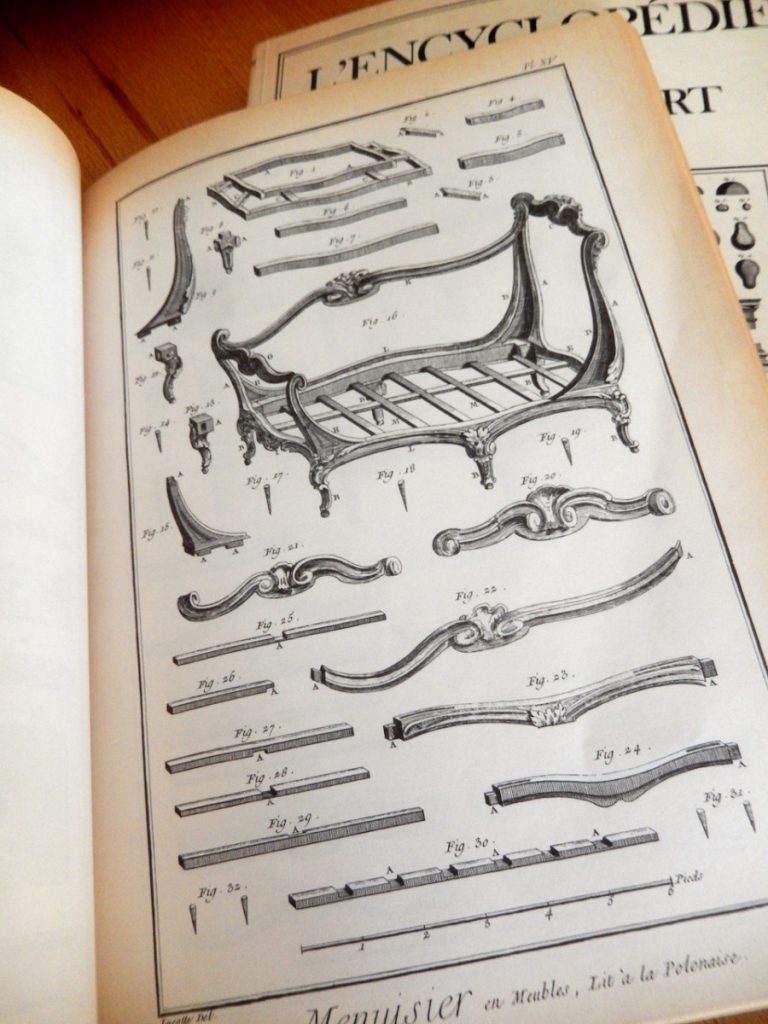
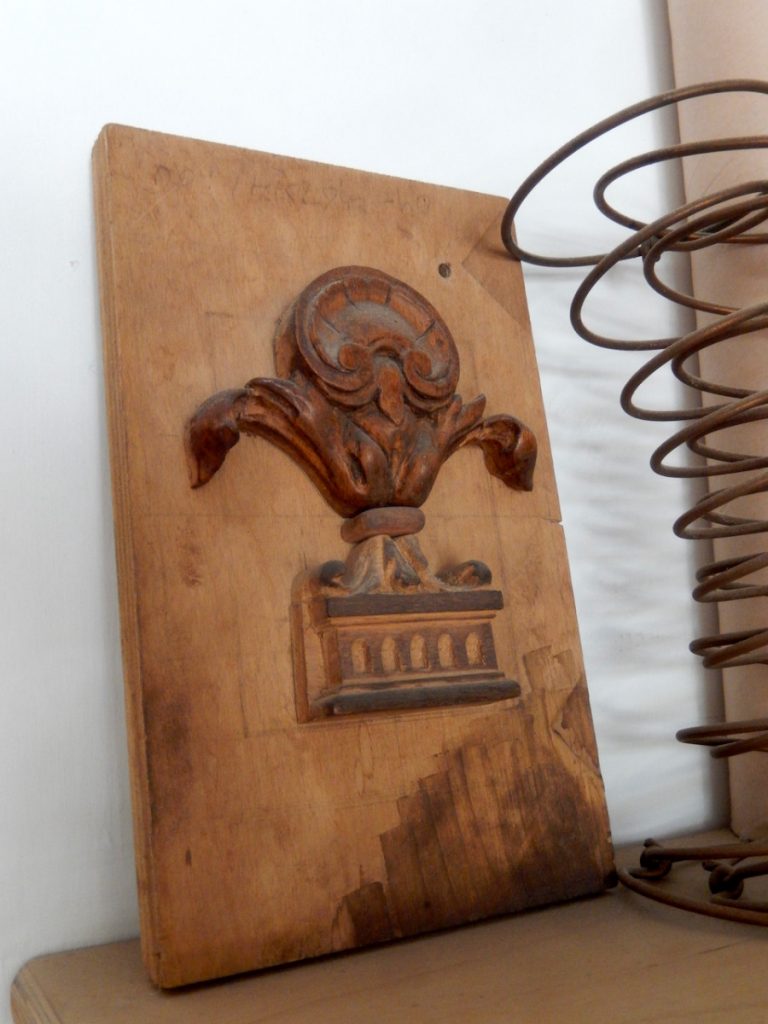
Study in Carving.
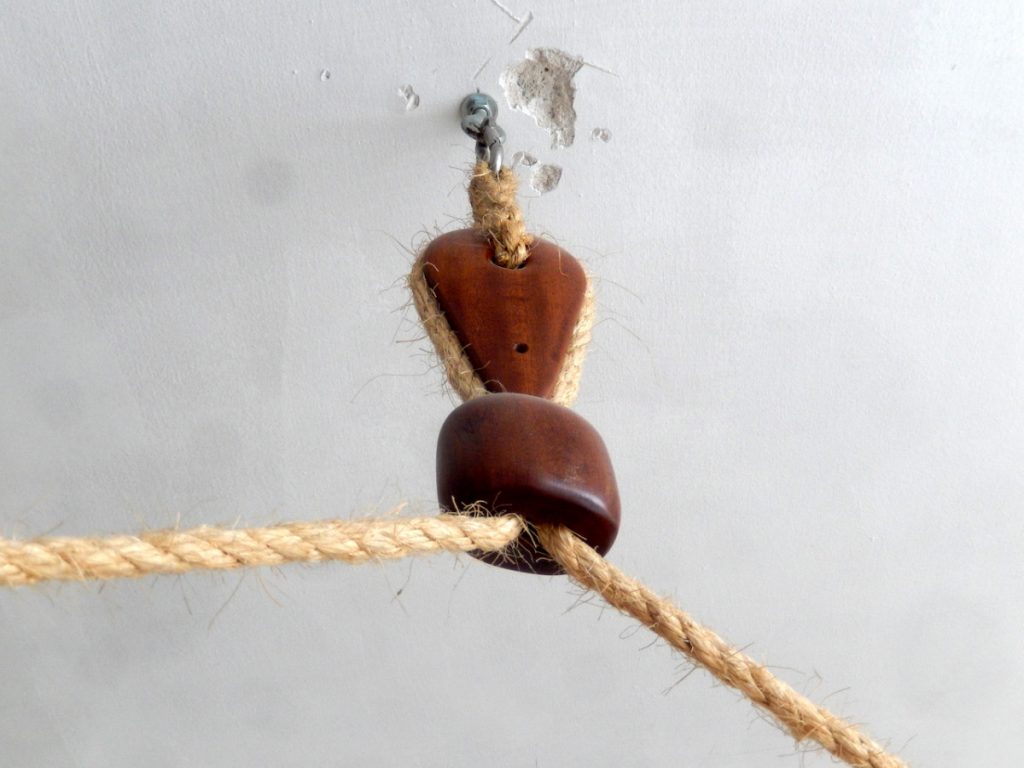
A surfing board hanging detail.
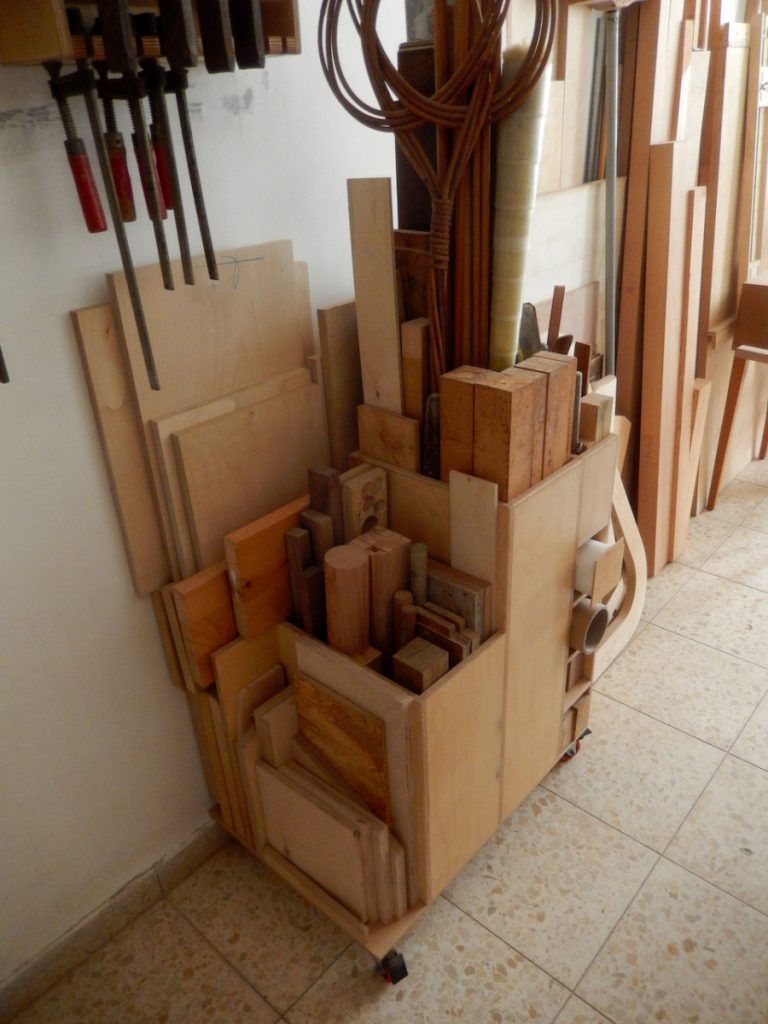
A caddy for scrap wood.
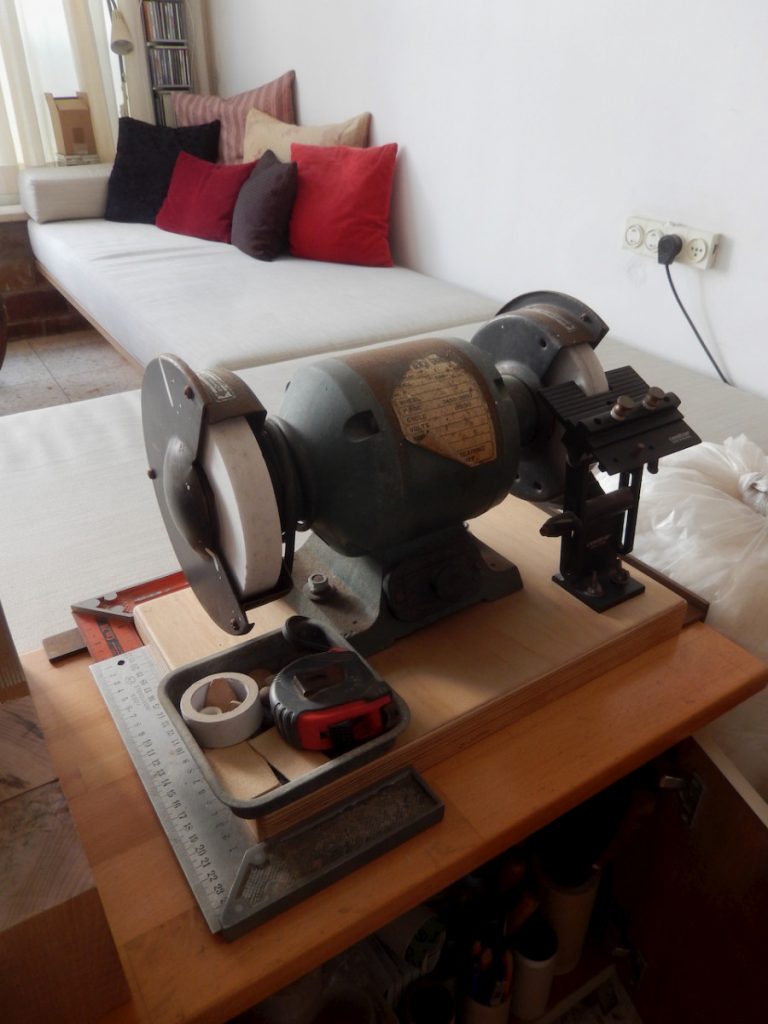
Tools and a grinder.
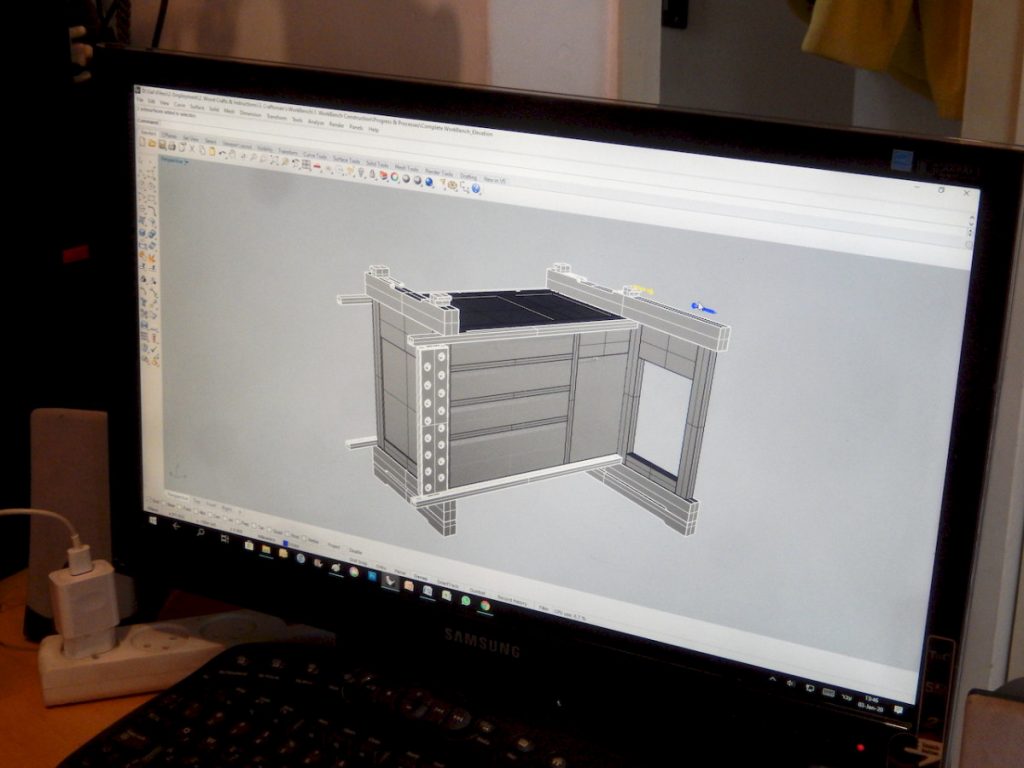
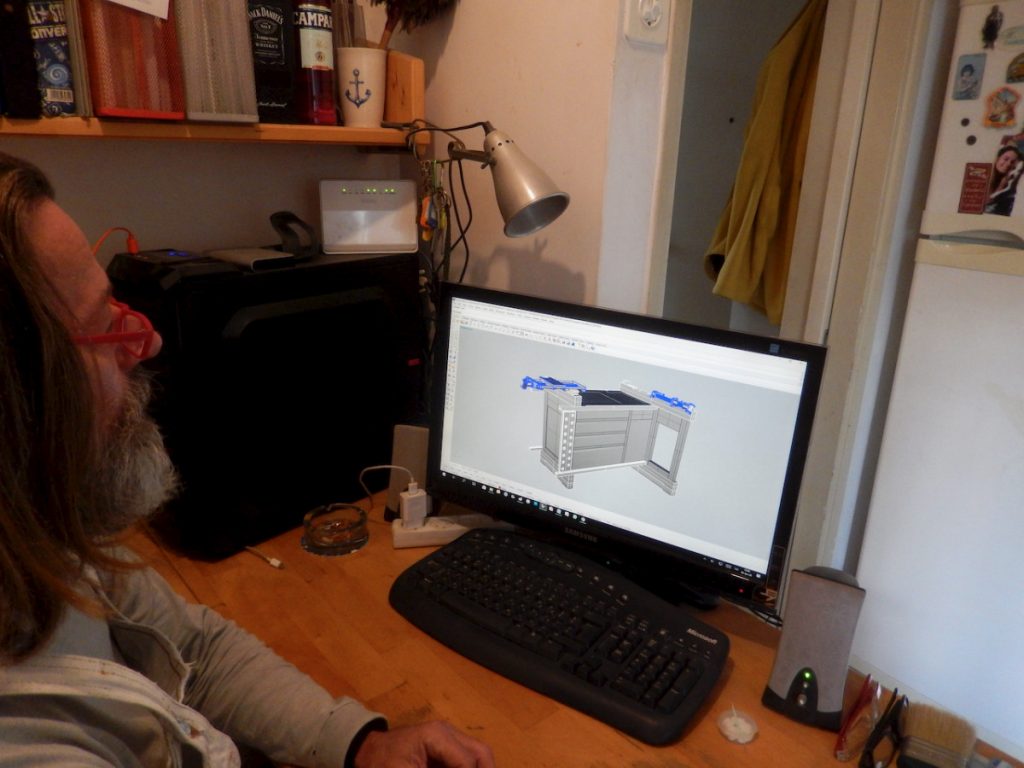
Gal’s workbench design plus a 3D view of his next project.
Here are some supplies and tools we find essential in our everyday work around the shop. We may receive a commission from sales referred by our links; however, we have carefully selected these products for their usefulness and quality.



